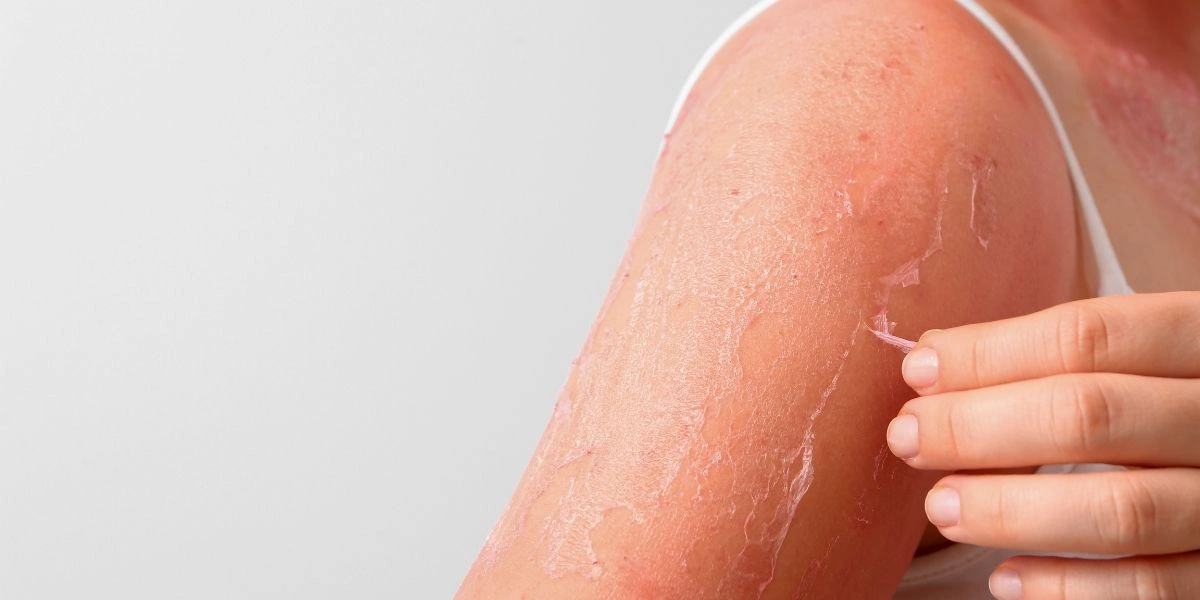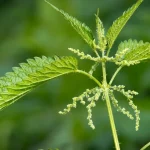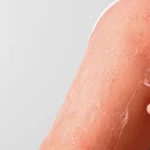Burns: how to recognize them, take action and restore the skin with Ribogal fish ointment

About hives – types and symptoms
Burns are caused by excessive exposure to heat, sunlight, or chemicals. It is important to recognize them quickly:
- First stage – red, painful skin without blisters (e.g. sunburn).
- Second degree – blisters, intense pain, damage to deeper layers.
- Third degree – all layers of skin damaged, requires immediate medical attention.
What happens to the skin when it burns?
Burns disrupt the structure and function of the skin in various ways:
- Disrupted skin barrier and increased transepidermal water loss ( TEWL )
- Increased inflammation and swelling
- Impaired regeneration ability
First aid for burns
- Cool the burned area with cold (but not ice) water for 10–20 minutes.
- Avoid rubbing, sunlight, and chemicals.
- Use a gentle ointment that retains moisture and supports skin renewal.
How the ingredients in Ribogal work
Galex Ribogal , fish ointment, combines ingredients with scientifically supported effects:
| Ingredient | Effect on the skin |
|---|---|
| Petrolatum | Reduces TEWL and protects against further moisture loss. (1*) |
| Lanolin | It restores skin lipids, creates a protective film, hydrates and improves the barrier. (1*) |
| Omega-3 (EPA, DHA) | Anti-inflammatory, they improve hydration, accelerate healing and reduce UV-induced redness. (2*) |
| Vitamins A and D | They support skin regeneration and renewal. (4*) (5*) |
Instructions for use of Ribogal ointment
Apply a thin layer of ointment to cleansed and cooled skin 1-3 times a day. Suitable for face, body and all generations – even children. The formulation with natural lipids and scientifically supported effectiveness is an exception in the choice of natural-pharmaceutical care.
Literature: (*)
- Source: Optimized emollient mixture for skin barrier repair: Applications to global child health , (PM Elias, MQ Man, GL Darmstadt), https://pmc.ncbi.nlm.nih.gov/articles/PMC9078150/
- Source: Therapeutic Benefits of Topical Omega-3 Polyunsaturated Fatty Acids in Skin Diseases and Cosmetics: An Updated Systematic Review , (L. Mateu-Arrom, I. Mora, L. Garrote), https://pmc.ncbi.nlm.nih.gov/articles/PMC12228025/
- Source: Efficacy and Safety Assessment of Topical Omega Fatty Acid Product in Experimental Model of Irritant Contact Dermatitis: Randomized Controlled Trial , (M. Ivic, A. Slugan, D. Leskur, A. Seselja Perisin, D. Modun, T. Durdov, J. Bozic, D. Vukovic, J. Bukic), https://www.mdpi.com/2076-3417/14/15/6423
- Source: Vitamin A and Wound Healing , (R. Zinder, R. Cooley, LG Vlad, JA Molnar), https://aspenjournals.onlinelibrary.wiley.com/doi/10.1002/ncp.10420
5. Source: The Role of Vitamin D on the Wound Healing Process: A Case Series , (FD Siregar, W. Hidayat), https://pmc.ncbi.nlm.nih.gov/articles/PMC10075270/
Check out our latest posts
- Nettle – a natural gift of forest wisdom
 Stinging nettle (Urtica dioica) is an ancient medicinal plant rich in nutrients and antioxidants. It is clinically supported for its allergy relief, anti-inflammatory and nutritional value. Nettle tea or dishes provide gentle yet effective support for the body.
Stinging nettle (Urtica dioica) is an ancient medicinal plant rich in nutrients and antioxidants. It is clinically supported for its allergy relief, anti-inflammatory and nutritional value. Nettle tea or dishes provide gentle yet effective support for the body. - Burns: how to recognize them, take action and restore the skin with Ribogal fish ointment
 Burns weaken the skin barrier, causing moisture loss and inflammation. Quick first aid includes cooling and the use of gentle ointments. Ribogal fish ointment, rich in petrolatum, lanolin and omega-3 fatty acids, supports skin regeneration, guides its protection and hydration, and accelerates the healing process.
Burns weaken the skin barrier, causing moisture loss and inflammation. Quick first aid includes cooling and the use of gentle ointments. Ribogal fish ointment, rich in petrolatum, lanolin and omega-3 fatty acids, supports skin regeneration, guides its protection and hydration, and accelerates the healing process. - Yogurt bowl with flaxseed for energy, digestion and heart
 Yogurt bowl with flaxseed, berries and nuts – a nutritious and refreshing meal, rich in fiber and omega-3 to support the heart and digestion.
Yogurt bowl with flaxseed, berries and nuts – a nutritious and refreshing meal, rich in fiber and omega-3 to support the heart and digestion.
















